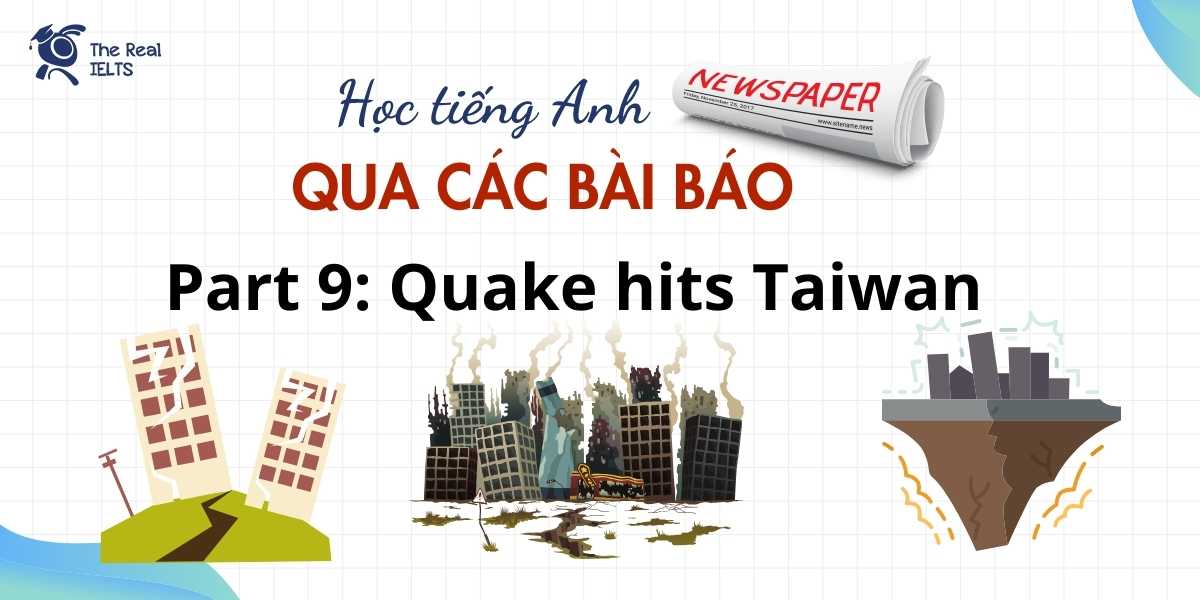Đề thi IELTS Reading có tiêu đề “IELTS Reading 2024 “The Growth of E-commerce and Its Implications””
Nhớ đọc thêm các bài luyện thi IELTS nhé.
IELTS Reading: “IELTS Reading 2024 “The Growth of E-commerce and Its Implications”
The Growth of E-commerce and Its Implications
In the past few decades, e-commerce has revolutionized the way people buy and sell goods and services. The rise of digital platforms, coupled with advances in technology and changing consumer behaviors, has fundamentally altered traditional retail landscapes. This growth in e-commerce has not only provided unprecedented convenience for consumers but also posed significant implications for various aspects of the global economy, business practices, and even societal norms.
The Expansion of E-commerce
E-commerce began as a niche market, with companies like Amazon and eBay pioneering the online shopping experience in the 1990s. However, the growth of the internet and the proliferation of smartphones have transformed e-commerce into a mainstream shopping channel. Today, consumers can purchase almost anything online, from groceries to luxury goods, with just a few clicks. The convenience of online shopping, combined with the ability to compare prices, read reviews, and receive products directly at one’s doorstep, has made e-commerce a preferred option for many.
The COVID-19 pandemic further accelerated the adoption of e-commerce. With lockdowns and social distancing measures in place, consumers turned to online platforms to meet their shopping needs. This surge in demand forced traditional brick-and-mortar retailers to adapt quickly, with many launching or expanding their online presence. As a result, e-commerce sales soared, with some sectors experiencing growth rates that were previously unimaginable.
Economic Implications
The rapid growth of e-commerce has had profound economic implications. On one hand, it has created new opportunities for businesses, especially small and medium-sized enterprises (SMEs). E-commerce platforms provide these businesses with access to a global market, allowing them to reach customers far beyond their local communities. This has leveled the playing field, enabling smaller businesses to compete with larger, more established companies.
However, the rise of e-commerce has also led to significant challenges. Traditional retailers have struggled to compete with online giants, leading to the closure of many brick-and-mortar stores. This shift has had a ripple effect on employment, as retail jobs have declined in many regions. Moreover, the dominance of a few major e-commerce platforms, such as Amazon, has raised concerns about market concentration and the potential for monopolistic practices.
The logistics industry has also been impacted by the growth of e-commerce. The demand for fast and reliable delivery services has increased dramatically, leading to the expansion of warehousing and distribution networks. This has created new jobs in some areas, but it has also put pressure on infrastructure and raised concerns about the environmental impact of increased delivery traffic.
Social and Cultural Implications
Beyond its economic impact, e-commerce has also influenced social and cultural norms. The convenience of online shopping has changed consumer expectations, with many people now expecting fast, free shipping and easy returns as standard. This has placed additional pressure on businesses to meet these expectations, often at the expense of profitability.
E-commerce has also contributed to the rise of the so-called “gig economy,” where individuals take on short-term, flexible jobs, such as delivery drivers or online sellers. While this has provided income opportunities for many, it has also raised questions about job security, workers’ rights, and the long-term sustainability of such employment models.
Moreover, the growth of e-commerce has led to changes in shopping behavior. The ease of online shopping has made impulse buying more common, as consumers are constantly exposed to targeted advertising and promotions. This has raised concerns about consumer debt and the psychological effects of constant exposure to marketing messages.
Environmental Implications
The environmental implications of e-commerce are also significant. The increase in online shopping has led to a rise in packaging waste, as products are often shipped in multiple layers of protective material. Additionally, the demand for fast delivery has contributed to an increase in carbon emissions, as goods are often shipped individually rather than in bulk. While some companies are taking steps to mitigate these effects, such as using sustainable packaging materials or offering carbon-neutral shipping options, the overall environmental impact of e-commerce remains a concern.
Future Trends and Challenges
As e-commerce continues to grow, several trends and challenges are likely to shape its future. One key trend is the increasing use of technology to enhance the online shopping experience. From artificial intelligence and machine learning to augmented reality and virtual reality, businesses are exploring new ways to engage with consumers and personalize the shopping experience.
Another challenge is the need to address the ethical and social implications of e-commerce. This includes ensuring fair competition, protecting consumer rights, and addressing the environmental impact of online shopping. As consumers become more aware of these issues, businesses will need to adapt to meet evolving expectations.
In conclusion, the growth of e-commerce has brought about significant changes in the way people shop, work, and interact with businesses. While it has created new opportunities and conveniences, it has also raised important questions about the future of retail, employment, and sustainability. As e-commerce continues to evolve, it will be crucial for businesses, policymakers, and consumers to navigate these challenges in a way that balances economic growth with social and environmental responsibility.
Đề bài thi IELTS Reading
Multiple Choice (10 câu)
- Which of the following companies pioneered the online shopping experience in the 1990s?
- A) Amazon and eBay
- B) Walmart and Target
- C) Google and Yahoo
- D) Microsoft and IBM
- What accelerated the adoption of e-commerce?
- A) The rise of smartphones
- B) The COVID-19 pandemic
- C) The decline of traditional retail
- D) The growth of social media
- Which of the following is NOT mentioned as an implication of the growth of e-commerce?
- A) Increased packaging waste
- B) Improved consumer debt management
- C) The rise of the gig economy
- D) Market concentration concerns
- What challenge do traditional retailers face due to e-commerce growth?
- A) Limited access to technology
- B) Difficulty in reaching a global market
- C) Inability to offer competitive prices
- D) Competition with online giants
- What has led to the rise of impulse buying in e-commerce?
- A) Free shipping offers
- B) Targeted advertising and promotions
- C) Fast delivery services
- D) The availability of luxury goods
- Which of the following has NOT been a result of the increase in online shopping?
- A) Rise in carbon emissions
- B) Expansion of warehousing networks
- C) Decline in retail jobs
- D) Decrease in consumer expectations
- What is one of the future challenges of e-commerce mentioned in the text?
- A) Increasing internet speeds
- B) Addressing ethical and social implications
- C) Expanding product categories
- D) Reducing shipping costs
- Which sector experienced a surge in demand during the COVID-19 pandemic?
- A) Entertainment
- B) E-commerce
- C) Education
- D) Hospitality
- What is a key trend that businesses are exploring in e-commerce?
- A) Using AI and VR
- B) Expanding brick-and-mortar stores
- C) Increasing physical advertisements
- D) Reducing online presence
- How has e-commerce affected small and medium-sized enterprises (SMEs)?
- A) It has reduced their market share
- B) It has given them access to a global market
- C) It has forced them to close
- D) It has made them dependent on traditional retail
True/False/Not Given (10 câu)
- E-commerce has always been a mainstream shopping channel.
- True
- False
- Not Given
- E-commerce has led to the complete decline of brick-and-mortar stores.
- True
- False
- Not Given
- The logistics industry has not been affected by the rise of e-commerce.
- True
- False
- Not Given
- E-commerce has only had positive economic implications.
- True
- False
- Not Given
- The increase in online shopping has decreased consumer debt.
- True
- False
- Not Given
- The environmental impact of e-commerce is a minor concern.
- True
- False
- Not Given
- All consumers now expect fast, free shipping and easy returns.
- True
- False
- Not Given
- E-commerce has created opportunities for businesses to reach customers globally.
- True
- False
- Not Given
- Traditional retailers have benefited from the growth of e-commerce.
- True
- False
- Not Given
- The growth of e-commerce has not influenced societal norms.
- True
- False
- Not Given
Yes/No/Not Given (5 câu)
- The author believes that e-commerce will continue to grow in the future.
- Yes
- No
- Not Given
- The author suggests that e-commerce will eventually replace all traditional retail.
- Yes
- No
- Not Given
- The author is concerned about the environmental impact of e-commerce.
- Yes
- No
- Not Given
- The author believes that the gig economy provides secure and sustainable employment.
- Yes
- No
- Not Given
- The author supports the use of AI and VR in enhancing the online shopping experience.
- Yes
- No
- Not Given
Matching Information (5 câu)
Match the following pieces of information with the paragraphs in the text.
- The impact of the COVID-19 pandemic on e-commerce.
- A) Paragraph 1
- B) Paragraph 2
- C) Paragraph 3
- D) Paragraph 4
- Concerns about the environmental implications of e-commerce.
- A) Paragraph 4
- B) Paragraph 5
- C) Paragraph 6
- D) Paragraph 7
- The role of technology in the future of e-commerce.
- A) Paragraph 5
- B) Paragraph 6
- C) Paragraph 7
- D) Paragraph 8
- The influence of e-commerce on shopping behavior.
- A) Paragraph 3
- B) Paragraph 4
- C) Paragraph 5
- D) Paragraph 6
- Challenges faced by traditional retailers due to e-commerce growth.
- A) Paragraph 1
- B) Paragraph 2
- C) Paragraph 3
- D) Paragraph 4
Matching Headings (5 câu)
Match the appropriate headings to the paragraphs in the text.
- Paragraph 1
- A) The Expansion of E-commerce
- B) Economic Implications
- C) Social and Cultural Implications
- D) Future Trends and Challenges
- Paragraph 2
- A) The Growth of Online Retail
- B) The Impact of the Pandemic on E-commerce
- C) Changes in Consumer Behavior
- D) The Role of Technology in Shopping
- Paragraph 3
- A) Economic Opportunities and Challenges
- B) Environmental Concerns of E-commerce
- C) The Rise of Impulse Buying
- D) Ethical Implications of Online Shopping
- Paragraph 4
- A) The Gig Economy and E-commerce
- B) Shifts in Employment Patterns
- C) E-commerce’s Effect on Retail Jobs
- D) The Expansion of Delivery Networks
- Paragraph 5
- A) E-commerce and Sustainability
- B) The Role of Logistics in E-commerce
- C) Carbon Emissions from Online Shopping
- D) The Environmental Cost of Convenience
Sentence Completion (5 câu)
Complete the following sentences with a word or phrase from the text.
- The rise of digital platforms has fundamentally altered ____________.
- The growth of e-commerce has provided ____________ for small and medium-sized enterprises.
- The dominance of a few major e-commerce platforms has raised concerns about ____________.
- The convenience of online shopping has led to changes in ____________.
- The demand for fast and reliable delivery services has led to the expansion of ____________.
Đáp án bài thi IELTS Reading
Multiple Choice
- A (Amazon and eBay)
- B (The COVID-19 pandemic)
- B (Improved consumer debt management)
- D (Competition with online giants)
- B (Targeted advertising and promotions)
- D (Decrease in consumer expectations)
- B (Addressing ethical and social implications)
- B (E-commerce)
- A (Using AI and VR)
- B (It has given them access to a global market)
True/False/Not Given
- False (E-commerce began as a niche market, not a mainstream channel.)
- False (E-commerce has caused many stores to close, but not a complete decline of all brick-and-mortar stores.)
- False (The logistics industry has been significantly impacted by the rise of e-commerce.)
- False (E-commerce has both positive and negative economic implications.)
- False (The increase in online shopping has raised concerns about consumer debt, not decreased it.)
- False (The environmental impact of e-commerce is a significant concern mentioned in the text.)
- True (Many people now expect fast, free shipping and easy returns.)
- True (E-commerce provides businesses with access to a global market.)
- False (Traditional retailers have struggled due to the growth of e-commerce.)
- False (E-commerce has influenced societal norms.)
Yes/No/Not Given
- Yes (The author believes that e-commerce will continue to grow in the future.)
- No (The author does not suggest that e-commerce will replace all traditional retail.)
- Yes (The author expresses concern about the environmental impact of e-commerce.)
- No (The author raises questions about the long-term sustainability of the gig economy.)
- Not Given (The author does not explicitly state support for AI and VR but mentions them as trends.)
Matching Information
- B (Paragraph 2 discusses the impact of the COVID-19 pandemic on e-commerce.)
- B (Paragraph 5 addresses concerns about the environmental implications of e-commerce.)
- C (Paragraph 7 discusses the role of technology in the future of e-commerce.)
- D (Paragraph 4 addresses changes in shopping behavior.)
- C (Paragraph 3 mentions challenges faced by traditional retailers due to e-commerce growth.)
Matching Headings
- A (The Expansion of E-commerce – Paragraph 1)
- B (The Impact of the Pandemic on E-commerce – Paragraph 2)
- A (Economic Opportunities and Challenges – Paragraph 3)
- C (E-commerce’s Effect on Retail Jobs – Paragraph 4)
- D (The Environmental Cost of Convenience – Paragraph 5)
Sentence Completion
- traditional retail landscapes.
- new opportunities.
- market concentration.
- shopping behavior.
- warehousing and distribution networks.
Luyện tập bài khác ở bài viết:”100 bài luyện IELTS Reading 2024 – 2025“















